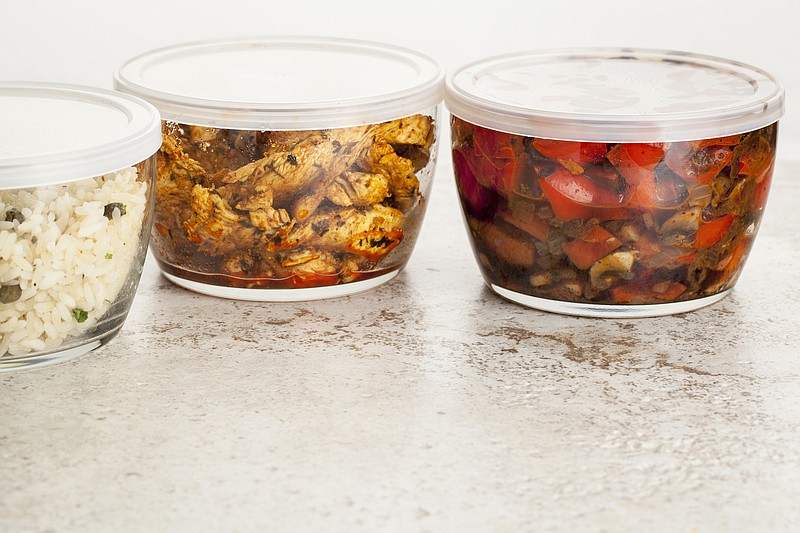Intense and fierce storms bring heavy winds and rains and can knock out power for many people.
That means refrigerators and freezers full of food not being powered by a generator are not working. It also brings on food safety issues and plenty of food is going to go to waste.
Here's what you need to know and what to do.
The first rule to remember is "when in doubt, throw it out." And also, never ever taste a food to determine if it's OK. If your power was out just a few hours and you didn't open the refrigerator or freezer, chances are the food is OK.
A refrigerator should keep food cold for six hours and a half-full freezer 24 hours (48 hours if the freezer is full) if you don't open the doors, according to the USDA's Food Safety and Inspection Service.
Here are some guidelines gleaned from www.fsis.usda.gov to have handy when the power goes out.
Try not to open the refrigerator and freezer doors (doing so lets the cold air escape).
If you know the power will be out for an extended period, get ice or dry ice to keep foods cold. Fifty pounds of dry ice, the FDA says, should hold an 18-cubic-foot freezer for 2 days. Take care when handling dry ice, don't handle it with bare hands or place it directly on foods.
Use a refrigerator-freezer thermometer to check the temperature.
In either the refrigerator or freezer, if the temperature is 40 degrees or below, the food is safe.
Check the packages. If food still contains ice crystals or is at 40 degrees or below when checked with a food thermometer, you can refreeze it, but the quality may not be the same.
Group foods together in the freezer to help them stay cold longer.
Keep food on ice in coolers. Do not place perishable food out in the snow because outside temperatures can vary and food can be exposed to unsanitary conditions and animals.
Foods to Toss
Bacteria growth can take place in these foods that have been above 40 degrees for two hours or more. Discard the following if your refrigerator has been without power for more than 4 hours:
Raw, cooked or leftover meat, poultry, fish, soft cheeses, milk, yogurt, eggs, leftovers, hot dogs, bacon, lunch meats, pizza, shredded cheeses, casseroles, pasta and pasta sauces, cut fruits and vegetables.
Cream-based salad dressings, sauces and soups.
Opened mayonnaise, tartar sauce and horseradish of they were held above 50 degrees Fahrenheit for over eight hours.
Discard any foods like bread or salad greens that may have become contaminated by juices dripping from raw meat, poultry or fish.
Pasta salads.
Sour cream-based or any dairy-based dips.
Fruits and vegetables that have become slimy or spoiled.
Foods to Keep
Condiments, such as ketchup, mustard, jelly, jams, soy sauce and bottled marinade. Typically these have high salt and sugar content that can act as a preservative. Keep in mind jams and jellies can grow mold after three or four days. Toss out ones that show signs of mold.
Butter/margarine.
Hard and processed cheeses are typically OK.
Foods that don't actually require refrigeration like fresh herbs, spices, flour and nuts.
Fresh bread and rolls.
Whole fruits and vegetables that show no signs of decay.
How to Clean
Once the power is restored, here's how to care for the inside of your refrigerator or freezer and rid them of any odors.
Dispose of any spoiled or questionable food.
Remove shelves, crispers and ice trays. Wash them thoroughly with hot water and detergent. Then rinse with a sanitizing solution of 1 tablespoon of unscented, liquid chlorine bleach per gallon of drinking water.
Wash the interior of the refrigerator and freezer, including the door and gaskets, with hot water and baking soda. Rinse with a sanitizing solution.
Leave the door open for about 15 minutes.
Here's what to do if there is still an odor:
Wipe the inside of the unit with equal parts of vinegar and water to destroy mildew.
Leave the door open and allow to air out for several days.
Stuff the refrigerator and freezer with rolled newspapers. Keep the door closed for several days. Remove the newspaper and clean with vinegar and water.
Sprinkle fresh coffee grounds or baking soda loosely in a large, shallow container in the bottom of the unit.
Use a commercial product available at hardware and houseware stores. Follow the manufacturer's instructions.
The USDA's Meat and Poultry hotline, 888-674-6854, is open 11 a.m.-5 p.m. weekdays.

